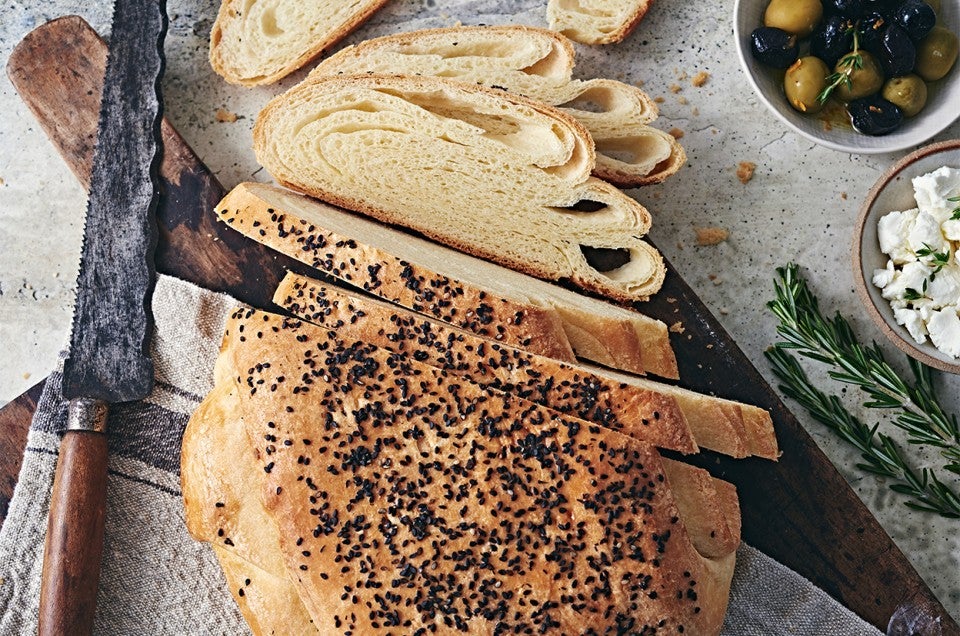


Food builds community. Anyone who loves to cook or bake knows that a shared meal has the unique ability to bring people together. For my Armenian family, the act of “breaking bread” is embodied in a special tradition: the Madagh Armenian Picnic.
With origins in the church, “madagh” means “offering” or “sacrifice” and refers to the story of Abraham and Isaac in the Book of Genesis. Madagh is also what Armenians have named the stew that is prepared for the event, traditionally made with lamb to represent the ram that God asked Abraham to offer in the place of his son, Isaac. The madagh stew is cooked over open-fire pits and provided for free by the church in the spirit of charity, good faith, and fellowship to all.
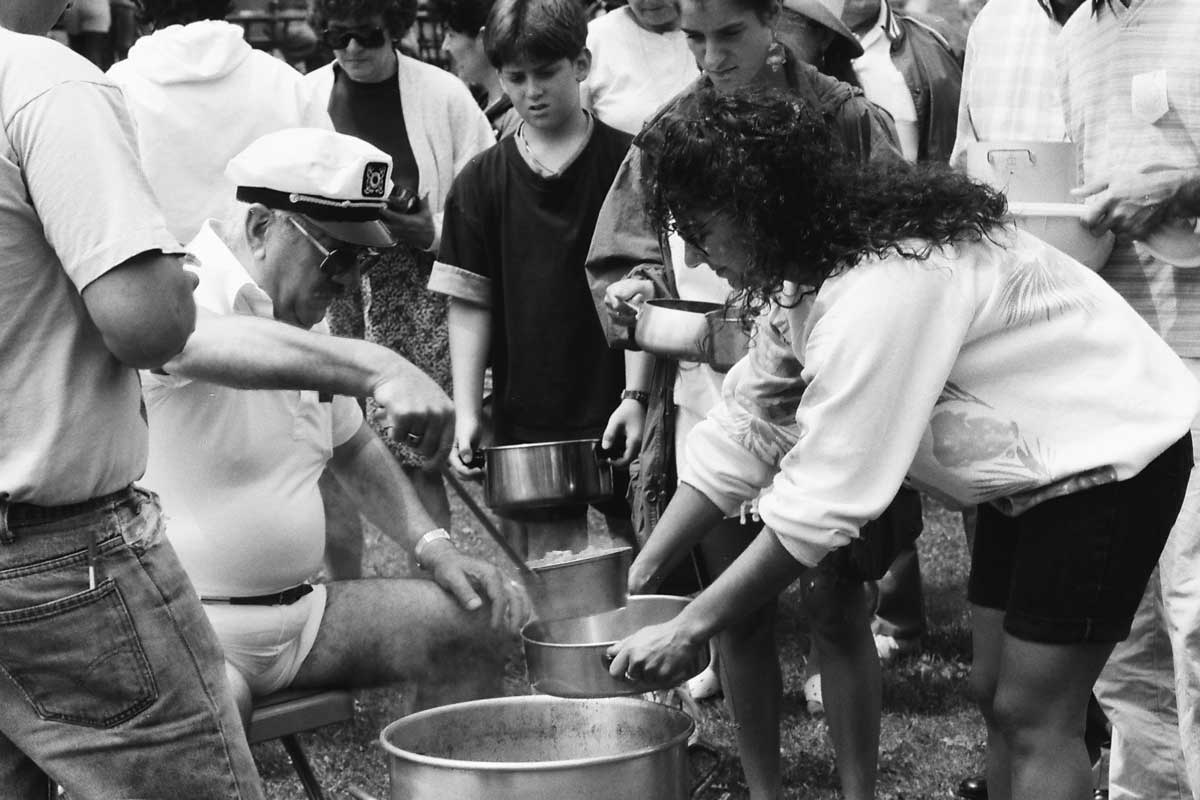
For over 80 years, St. Hagop Armenian Apostolic Church in Racine, Wisconsin has sustained this old-country tradition. Armenians and non-Armenians alike gather for the Madagh to enjoy a day of live Armenian music, dancing, church service, and perhaps most importantly, food.
There are many delicious recipes that St. Hagop prepares for the picnic, but for bakers looking to expand their bread repertoire, katah is a perfect place to start. It’s one of our most popular breads, and baked into this particular katah recipe is a story of community and resilience that we continue to celebrate.
Katah is a classic Armenian bread. Sometimes called an “Armenian croissant,” katah is an enriched, flaky loaf with many layers. To borrow an Armenian proverb: Amen geen eer madzoonzarneloo tsevuh oone, which translates to “every woman has her own way of making yogurt.” Or, simply put, there are many different ways of doing the same thing. In fact, many versions can be found throughout the Caucasus, sometimes under different names. In the Armenian diaspora, in particular, recipes like katah have become more unique as various Armenian communities passed them down through generations.
These differences and diversity have led to a whole host of delicious variations in flavor, shape, size, and decoration.
Some of the sweeter versions are more like puff pastry than bread, and others include a filling made of butter and sugar called khoriz. Although eaten year-round, katah was traditionally baked for the feast of Candlemas commemorating the presentation of Christ to the Temple before God. Katah is also sometimes made with a coin tucked inside the dough, symbolizing good luck to whomever received that special piece.
Despite the distinct preparations and styles, one element of katah that remains the same is the spirit with which it’s made. No matter which version you encounter, it will always contain the baker’s pride and care.
I’m sharing the recipe that I’m most familiar with, perhaps not the most extravagant version but the one closest to my heart. This recipe was brought to Racine by Armenian women from the villages of Tomarza, Khapert, and Jujun in the Anatolia region of present-day Turkey. They were part of the displaced Armenians who fled their homeland during the 1915 genocide.
These women and their families found themselves in Racine, a small industrial city in the very southeast corner of Wisconsin on the shores of Lake Michigan. Since then, these recipes have been passed down over generations, largely by word of mouth, until they were finally captured and immortalized in a collective community cookbook, Cooking Like Mama.
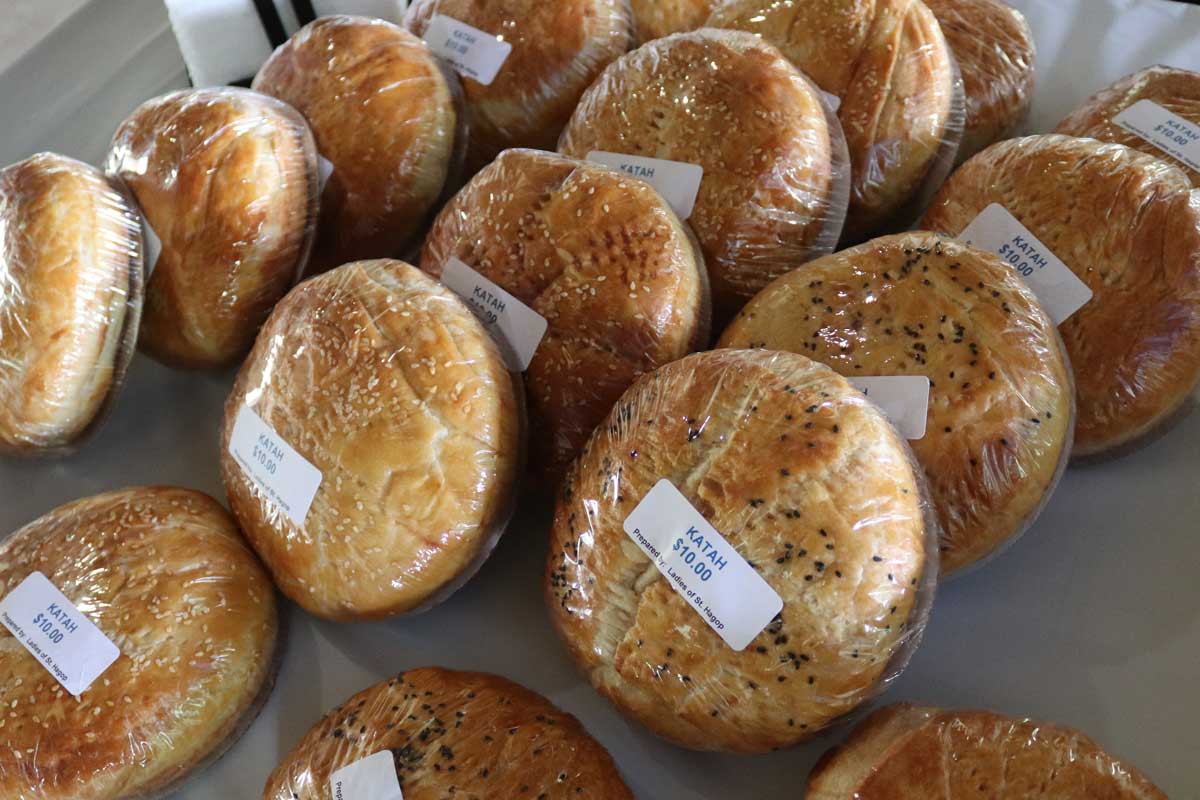
There are three separate katah recipes in Cooking Like Mama, but this is the version that St. Hagop follows when baking for the Madagh each year. The original recipe was written for large groups attending the picnic, and St. Hagop now triples it to satiate a growing crowd of over 1,000 attendees. Needless to say, this version has been scaled down to meet the needs of the home baker.
Katah was traditionally baked in an Armenian wood-fired clay oven called a tonir. Today, it’s cooked in the ovens of St. Hagop’s basement kitchen. For each of the two rises required for katah, the bakers close off the kitchen, turn on all of the ovens, and open the oven doors to create the ideal warm, toasty environment for the dough.
The result is a buttery 9" round loaf of katah, optionally topped with a sprinkle of nigella or sesame seeds. Its decorations are minimal, as the bakers prioritize the rolling and folding process to achieve the ultimate layered loaf.
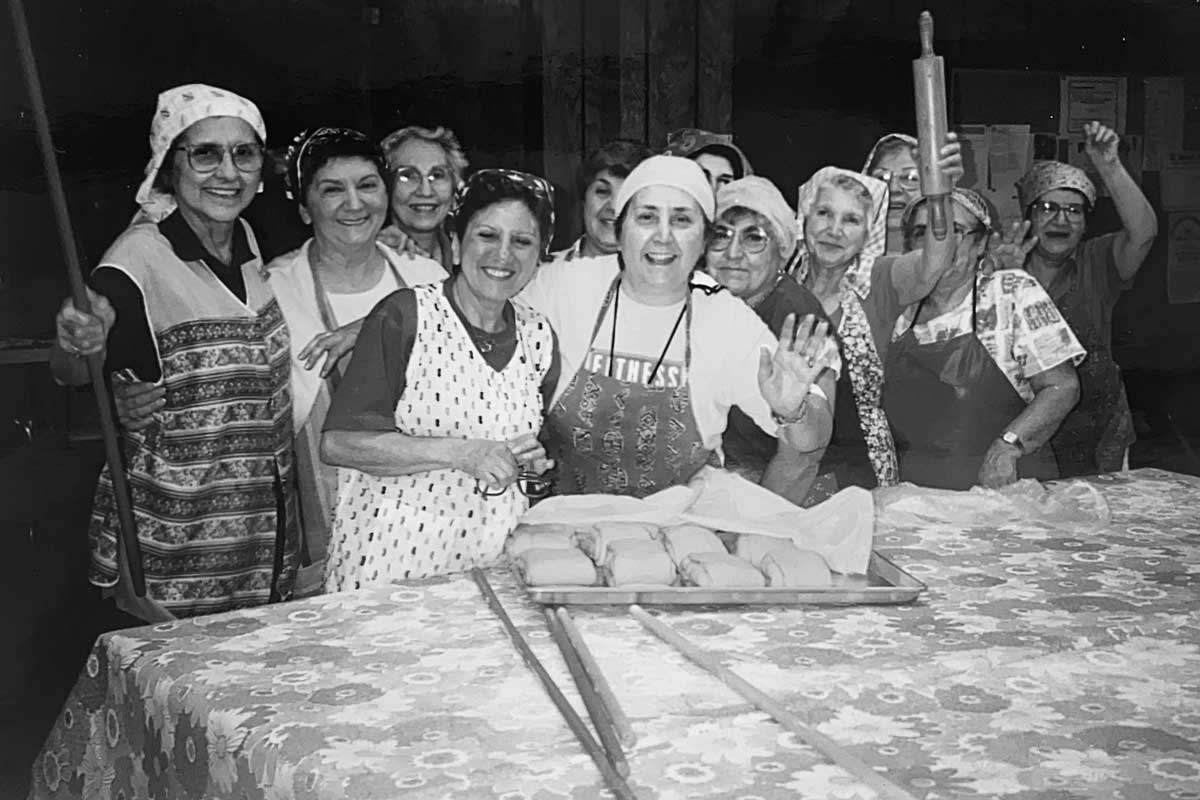
St. Hagop has a small designated team of katah experts who lead its preparation each year. Working side by side, the katah crew wields long wooden tapered dowels called okhlavoos, rhythmically rolling out circles of dough over 24" wide. The work is accompanied by talk, outbreaks of laughter, and the occasional good-natured jab at someone’s technique.
Long-time katah connoisseur Johnny Buchaklian offers this advice to first-time katah bakers: “Don’t worry if you rip the dough while rolling it out, as the rolling process can be tricky if it’s your first time. Ultimately, any tears will be obscured after folding the dough. Aim for an equal thickness as you roll it out, and remember that the thinner the dough, the more times you can fold it and the more buttery layers your katah will have.”
The past year has challenged us to find new ways of staying connected with friends and loved ones. Although last year the Madagh wasn’t able to continue as usual, I still celebrated by rolling up my sleeves and heading to the kitchen.
Hrametzek seghanuh, jashuh badrasd eh (Welcome to the table, the meal is ready)
For my family, these recipes have long helped us transcend physical and cultural boundaries. It’s perhaps no coincidence the Armenian word for bread, “hatz,” is synonymous with “food.” Sharing our recipes both literally and figuratively embodies the expression “breaking bread.”
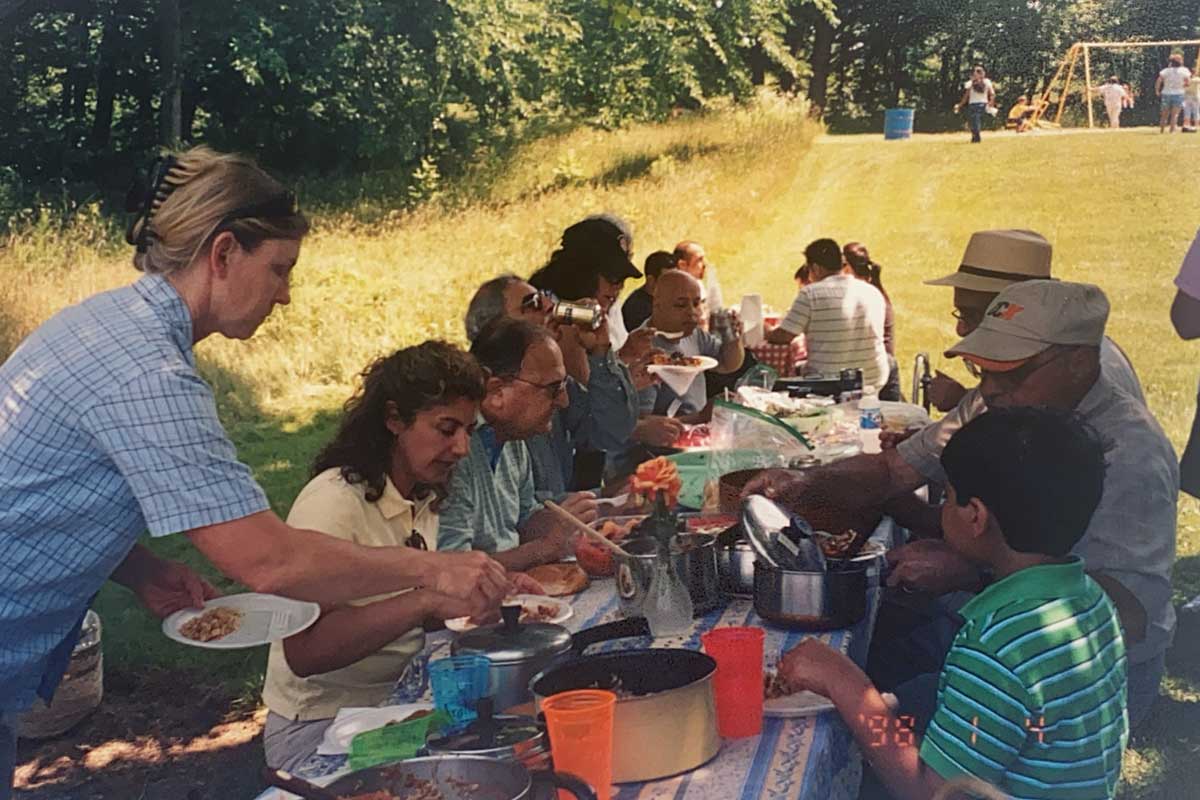
Year after year, the meals in Cooking Like Mama have brought people together to honor the story of our community. So as you try St. Hagop’s katah recipe, I invite you to listen to some Armenian music, learn more about Armenian history, and help us keep our culture alive. Paree akhorjag! (Bon appétit!)
Cooking Like Mama is available from St. Hagop. If you're interested in purchasing a copy, please contact the cookbook caretaker, Denise Lansing, at (262) 672-9265. The cost is $25.00 plus shipping & handling, with all proceeds to benefiting St. Hagop.
For more personal recipes and baking stories, see our Let Good Things Rise homepage.
Cover photo by Liz Neily